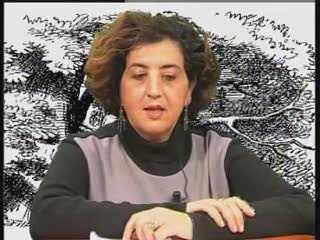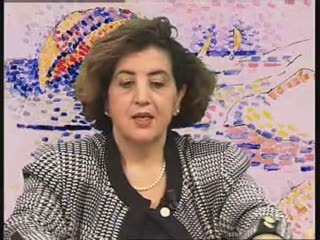May, Pierre
1959 - Chargé de Recherche au CNRS.
1962 - Maître de Recherche au CNRS.
1964/1965 - Visiting Scientist, Albert Einstein College of Medicine,
New York, USA. 1er octobre 1964 au 31 mai 1965.
1976 - Visiting Scientist, NIAID, National Institutes of Health
(Bethesda, Md USA) 9 juillet - 22 septembre.
1981/1982 - Responsable du Département de Virologie de l'IRSC,
Villejuif (France).
1982/1992 - Directeur du Laboratoire d'Oncologie Moléculaire,
UPR275, CNRS - IRSC, Villejuif (France).
1985 - Directeur de Recherche I, CNRS.
1994/2004 - Directeur de Recherche Emérite au CNRS.
1993 Prix de la Recherche du Comité du Val-de-Marne de la Ligue Nationale contre le Cancer.
1993 Prix Rosen de Cancérologie de la Fondation pour la Recherche
Medicale Française.
1996 Prix Léopold Griffuel de l'Association pour la Recherche sur le Cancer.
Publications les plus significatives de Pierre May
- Kress, M., May, E., Cassingena, R. and May, P. (1979).
Simian virus 40-transformed cells express new species of proteins precipitable by anti-
simian virus 40 tumor serum. J. Virol, 31: 472-482.
- May, E., Kress, M., Lange, M. and May, P. (1980).
New genetic infirmation expressed in SV40 transformed cells: characterization of 55 K proteins and evidence for unusual SV40 early mRNAs. Cold Spring Harbor Sumposium, 44: 189-199.
- May, P., May, E., and Kress, M. (1982).
Control of cellular levels of the transformation associated 53-55 K proteins.
Advences in Viral Oncology, 2: 59-80.
- Duthu, A., Ehrhart, J.C., Benchimol, S., Chandrasekaran, K. and May, P. (1985).
p53-transformaton related protein: kinetics of synthesis and accumulation in
SV40-infected primary mouse kidney cell cultures. Virology, 147: 275-286.
- Caron de Fromentel, C., Viron, A., Puvion, E.and May, P. (1986).
SV40-large T-antigen and transformation related protein p53 are associated in situ with nuclear RNP structures containing hn RNA of transformed cells. Exp. Cell Res., 164: 35-48.
- Caron de Fromentel, C., May-Lévin, F., Mouriesse, H., Lemerle, J., Chandrasekaran, K.
and May, P. (1987).
Presence of circulating antibodies against the cellular protein p53 in a notable proportion of children with B cell lymphoma. Int. J. Cancer, 39: 1
- Soussi, T., Caron de Fromentel, C., Méchali, M., May, P. and Kress, M. (1987).
Cloning and characterization of a cDNA from Xenopus laevis coding for a protein
homologous to human and murine p53. Oncogene, 1: 71-78.
- Ehrhart, J.C., Duthu, A., Ullrich, S., Appella, E. and May, P. (1988).
Specific interaction between a subset of the p53 protein family and heat shock proteins
hsp72/73 in a human osteosarcoma cell line. Oncogene, 3: 595-603.
- Louis, J.M., McFarland, V.W., May, P. and Mora, P.T. (1988).
The phosphoprotein p53 is down-regulated post-transcriptionally during embryogenesis in vertebrates. Biochimica & Biophysica Acta, 950: 395-402.
- Soussi, T., Bègue, A., Kress, M., Stehelin, D. and May, P. (1988).
Nucleotide sequence of a cDNA encoding the Chicken p53 nuclear oncoprotein.
Nucl.Acids Res., 16: 11383.
- Soussi, T., Caron de Fromentel, C., Sturzbecher, H.W., Ullrich, S., Jenkins, J. and
May, P. (1989).
Evolutionary conservation of the biochemical properties of p53: specific interaction
of Xenopus laevis p53 with SV40 large T antigen and mammalian heat shock proteins 70. J. Virology, 63: 3894-3901.
- Romano, J.W., Ehrhart, J.C., Duthu, A., Kim;C.M., Appella, E. and May, P. (1989).
Identification and characterization of a p53 gene mutation in a human osteosarcoma
cell line. Oncogene, 4: 1483-1488.
- Caron de Fromentel, C., Soussi, T. et May, P. (1990).
La protéine p53: De la biologie moléculaire à la clinique. Médecine Sciences, 6: 352-358.
- Soussi, T., Caron de Fromentel, C. and May, P. (1990).
Structural aspects of the p53 protein in relation to gene evolution.
Oncogene, 5: 945-952.
- Caron de Fromentel, C., Padkel, C., Chapus, A., Baney, C., May, P. and Soussi, T. (1992).
Rainbow trout p53: cDNA cloning and biochemical characterization.
Gene 112: 241-245.
- Duthu, A., Debuire, B., Romano, J., Ehrhart, J.C., Fiscella, M., May, E., Appella, E. and
May, P. (1992).
p53 mutations in Raji cells: Characterization and localization relative to other Burkitt's lymphomas. Oncogene, 8: 2161-2167.
- Yonish-Rouach, E., Grunwald, D., Wilder, S., Kimchi, A., May, E., Lawrence, J.J., May, P.
and Oren, M. (1993).
p53-mediated cell death: relationship to cell cycle control. Mol. Cell. Biol., 13: 1415-1423.
- Biard, D.S.F., Martin, M., LeRhun, Y., Duthu, A., Lefaix, J.L., May, E. and May, P. (1994).
Concomitant p53 gene mutation and increased radiosensitivity in rat lung embryo
epithelial cells during neoplastic development. Cancer Research, 54: 3361-3364.
- LeRhun, Y., Duthu, A., Ehrhart, J.C., Michiels, F., May, E. and May, P. (1994).
Directional selection associated with clonal expansion of p53 mutant cells during
neoplastic development of carcinogen-treated rat embryo lung epithelial cells.
Oncogene, 9: 263-271.
- Soussi, T., and May, P. (1996)
Structural aspects of the p53 protein in relation to gene evolution: a second look.
J. Mol. Biol., 260: 623-637.
- Bourdon, J.C., Deguin-Chambon, V., Lelong, J.C., Dessen, P., May, P., Debuire, B. and
May, E. (1997).
Further characterisation of p53 - responsive element - Identification of new candidate
genes for transactivation by p53. Oncogene, 14: 85-94.
- Le Goas, F., May, P., Ronco, P.and Caron de Fromentel, C. (1997).
cDNA cloning and immunological characterization of rabbit p53.
Gene, 185: 169-173.
- Dumaz, N., Duthu, A., Ehrhart, J.C., Drougard, Ch., Appella, E., Anderson, C.W., May, P.,
Sarasin, A. and Daya-Grosjean,L. (1997).
Prolongated p53 protein accumulation in trichothiodystrophy fibroblasts is dependent on unrepaired pyrimidine dimers on the transcribed strand of cellular genes.
Molecular Carcinogenesis, 20: 340-347.
- May, P., Soussi, Th. (1997).
Tumor suppressor p53, Editorial. Pathologie Biologie, 45, 781-784.
- May, P. (1998).
Apoptose: Editorial, Perspectives et Promesses. Médecine Sciences, 14, 6-8.
- May, P., May, E. (1998).
Protéine p53: de l'interaction avec les protéines virales à la pathogénie des cancers
humains. Virologie, 2, 347-354.
- May P. and May E. (1999).
Twenty years of p53 research - Structural and functional aspect of the protein.
Oncogene, 18: 7621-7636.
- May P. (2000)
Cell cycle control and cancer. Pathol. Biol., 48 : 171-173.
1987/1988 - Membre de la "Commission Scientifique Spécialisée n° 1 (INSERM)".
1987 - présent - Membre de l'Editorial Board du journal "Oncogene".
1992/1993 Membre de la Commission de Recherche de l'Hôpital Paul Brousse (AP de Paris) à Villejuif.
Vidéos
La p53, gardienne du génome.
Les recherches sur p53 ont récemment pris une ampleur extraordinaire en cancérologie. La protéine p53 fonctionne normalement comme un frein de la prolifération cellulaire, permettant de maintenir la
p53 , supresseur de tumeurs
La p53: mise en évidence, réarrangement et invalidation du gène Le virus simien 40 (SV40) exprime un oncogène, l'antigène grand T (AgT), qui est capable de transformer des cellules en culture et d


